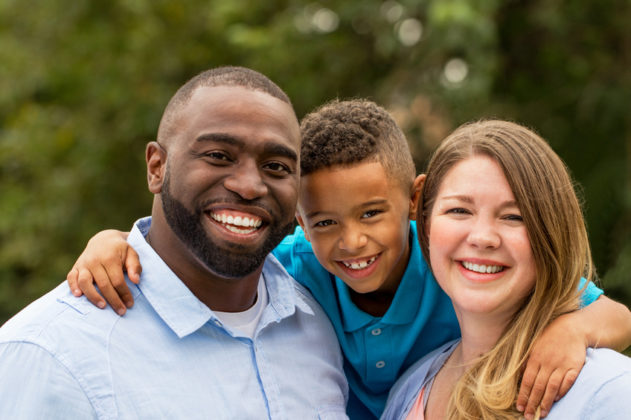My son casually commented that my skin was “peach-color” and daddy’s skin was “brown.” I looked at him in the rearview mirror and asked, “What color is your skin?”
Mrs. E., my high school’s college counselor, called me “Little White Wendy.”
I was a regular visitor to her office, searching for scholarship opportunities that would turn my college dreams into a reality. Mrs. E. told me there weren’t many scholarships available for students “like me.”
She meant white students.
There were about six hundred students in my graduating class. Most of them were Latino/a. At my school, and in the Los Angeles Unified School District in general, whites were (and still are) the minority.
It was the first time I felt that the color of my skin mattered. Those visits to Mrs. E’s office made me feel like being white counted as a strike against me. My “whiteness” nullified my straight-As, community service, and teacher recommendation letters.
In a small way, I finally began to understand in my heart what years of history lessons had been trying to teach me. I had spent my life living in a safe bubble of “white privilege,” and now that I was being discriminated against, I felt angry, as if I was being punished for something other white people had done. I couldn’t change the past or make amends for the injustices others had experienced.
During my community college years, I married a black man. Though, I never felt the need to announce that Paul is a black man. Paul is black, yet he’s not “black.” He’s not black like the color of tar or my computer printer. Just as I’m not “white.” My skin doesn’t look like the color of whipped cream or cotton balls.
Our racial differences didn’t become an issue until we were parents and registering our son for kindergarten. His preschool enrollment forms hadn’t asked for any racial identification, but elementary school did. We had to reach a decision that answered the question, “What are you?”
Because that’s the question my husband is often asked. You can’t tell, just by looking at him. Over the years, he’s been mistakenly identified as Egyptian, Ethiopian, Hawaiian, Israeli, and Latino.
Our son hasn’t been asked because he is surrounded by a diverse group of kids. Kids whose lunch boxes contain packages of seaweed, peanut butter and jelly sandwiches, sushi, matzo, and curry dishes. And our son hasn’t been asked because kids don’t really care. Kids ask, “Can you come out and play?” or “What’s your favorite movie?”
My husband and I felt as if we were granted a degree of omnipotence neither one of us wanted. The color of our skin was of little importance to us as a family, but it mattered to the Los Angeles Unified School District. The forms allowed us to mark two boxes; one the “primary race” and the other the “secondary race.”
We knew which two to mark; we just didn’t know which order to mark them. I’m Jewish because my mother is. If I follow that line of reasoning, my son is Caucasian. But, back in the days of Jim Crow laws, any bit of blackness constituted full blackness. My son has an African-American father, therefore, he is African-American.
It was 2013. The United States was being governed by President Barack Obama, a man with mixed-race parents (just like our son). A man who is known as our country’s first African-American President. And my husband and I were at a stand-still. We didn’t want to give one racial label more preference than another. And neither one of us really understood why we were even being asked.
So we let our son decide. As we were driving to the Autry Museum on a family outing, my son casually commented that my skin was “peach-color” and daddy’s skin was “brown.” I looked at him in the rearview mirror and asked, “What color is your skin?”
I saw him look with concentration at his arms, turning them over, and examining them from different angles. He answered, “Dark white.”
We filled out the forms, marked “African-American” as the primary race, “Caucasian” as the secondary race, and our son was enrolled in kindergarten.
Since then, the question of race hasn’t been an issue for our family. We’re more concerned about the business of being a family—homework, bills, doctor’s appointments. But that’s now.
What will it be like when it’s Ryan’s turn to visit his college counselor’s office? Will skin color be a factor then too?
I just hope that no one refers to him as “Little Mixed Ryan.”
Wendy Kennar is a former elementary school teacher and a freelance writer who finds inspiration in her 8-year old son. Her writing has appeared in several publications and anthologies, both in print and online. You can read more from Wendy at wendykennar.com.
Other Links:

